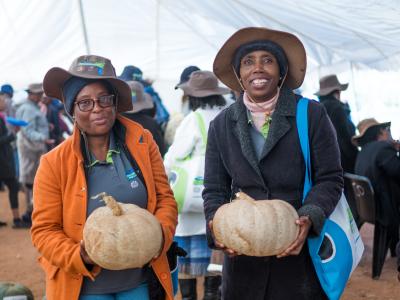The climate of Lesotho is characterised by the occurrence of dry spells and wet spells over recorded time. These climatic fluctuations have had serious impacts on the environment. The impacts associated with dry spells include food shortages, famine, disease epidemics, invasion by exotic plants and destructive insects, dust bowls and the initiation of down cutting by rivers. The longest dry spell in the 200-year record occurred between 1991 and 1995. The occurrence of dry spells has been found to be correlated to the EL Niño phenomenon-an abnormal increase in sea surface temperature-while wet spells are related to La Niña conditions.
Lesotho is expected to experience a change in temperature and precipitation patterns, toward dryer and hotter conditions. In addition, the intensity and frequency of extreme events such as floods and drought are expected to increase, especially in the western and northern lowlands. The impacts of climate change in Lesotho will vary from sector to sector. Water resources will be affected negatively by the reduction of precipitation and increase in temperature. This will result in an increase in evaporation losses and a decrease in runoff and groundwater recharge. Rangeland conditions may deteriorate-and ultimately be destroyed-by changes in climate, leading to a change in the quality of livestock and livestock products. The present indigenous forests may change into semi-arid types, while agricultural production will decline, resulting in food shortages.
Lesotho is the only country in the world with all its territory above 1000 metres. Entirely surrounded by South Africa, it is situated at the highest point of the Drakensberg escarpment on the eastern rim of the South African plateau.
Lesotho is a landlocked with an area of about 30,000 km2 . The country is divided into 4 ecological zones: the lowlands (17%), the foothills (15%), the mountains (59%), and the Senqu River valley (9%). Economic activities are largely confined to the lowlands, foothills and the river valley, while the mountainous regions are more ideal for grazing and water resource development, especially hydropower development.
Lesotho’s population is essentially made up of one homogeneous ethnic grouping (Basotho), and is estimated to be 2 million. The population growth rate is 2.3%. Over 80% of the population in Lesotho reside in rural areas. GNP per capita is estimated at US$ 550, which is relatively high compared to other Eastern and Southern African countries. However, a significant portion (49.2%) of the population in Lesotho lives under the poverty line. The poor are more vulnerable to climate change since they do not have sufficient incomes to prepare and protect themselves from the adverse effects of climate change.
Latest Updates
See allLatest Publications
See allThe National Strategic Development Plan extends from 2012-13 to 2016-17 and serves as an implementation strategy for the country's National Vision…




